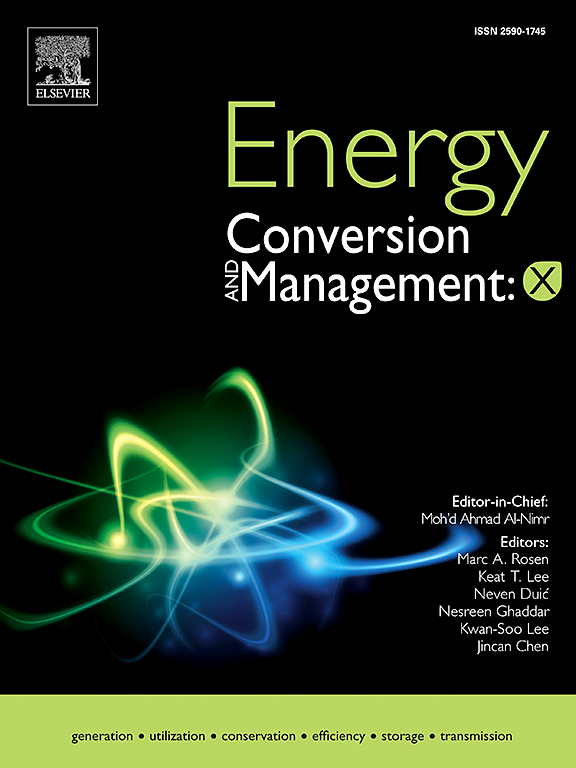Techno-economic and life cycle cost analysis for hybrid short-sea passenger vessels based on optimization of different energy storage configurations and management
IF 10.9
1区 工程技术
Q1 ENERGY & FUELS
引用次数: 0
Abstract
The decarbonization of short-sea shipping requires a multifaceted approach, with advanced battery technologies and renewable energy sources (RES) offering a viable pathway toward zero-emission maritime transport. Although battery-powered energy storage systems are gaining traction in various industries, their integration into short-sea shipping remains challenging due to operational constraints such as frequent short port stops and the need for efficient shore-side charging infrastructure. This study aims to identify the most suitable battery technology for hybrid vessels, balancing environmental and economic considerations. By analyzing seven distinct electrification configurations integrating photovoltaic energy and various battery technologies, including lead–acid, lithium-ion, and nickel-iron batteries, this research evaluates performance under different depths of discharge (DOD) and dispatch strategies. A life cycle cost analysis is conducted for a passenger vessel in Greece, comparing optimization techniques such as genetic algorithm (GA), differential evolution (DE), grasshopper optimization algorithm (GOA), dragonfly algorithm (DA), grey wolf optimizer (GWO) and moth-flame optimizer (MFO) to determine the most efficient and cost-effective battery system. The results indicate that lead–acid batteries operating at 80% DOD yield significant advantages in both economic and environmental terms. While nickel-iron batteries offer some cost-related benefits, they are associated with higher greenhouse gas emissions and larger system size. Among the optimization techniques, the GOA consistently demonstrates robust and efficient performance across all evaluated cases. These findings offer valuable insights for selecting battery systems to enhance the environmental and economic performance of hybrid vessels operating on coastal routes.
基于不同储能配置与管理优化的混合动力短海客船技术经济与全寿命周期成本分析
短途海运的脱碳需要多方面的方法,先进的电池技术和可再生能源(RES)为实现零排放的海上运输提供了可行的途径。尽管电池供电的储能系统在各个行业都受到关注,但由于运营限制,如频繁的短港口停靠和对高效岸上充电基础设施的需求,将其整合到短途海运中仍然具有挑战性。本研究旨在确定最适合混合动力船舶的电池技术,平衡环境和经济因素。本研究通过分析集成光伏能源和多种电池技术(包括铅酸电池、锂离子电池和镍铁电池)的七种不同电气化配置,评估了不同放电深度(DOD)和调度策略下的电气化性能。以希腊一艘客船为研究对象,对遗传算法(GA)、差分进化算法(DE)、蚱蜢优化算法(GOA)、蜻蜓优化算法(DA)、灰狼优化器(GWO)和蛾焰优化器(MFO)等优化技术进行了寿命周期成本分析,以确定最高效、最具成本效益的电池系统。结果表明,在80% DOD下工作的铅酸电池在经济和环境方面都具有显著优势。虽然镍铁电池提供了一些与成本相关的好处,但它们与更高的温室气体排放和更大的系统尺寸有关。在优化技术中,GOA在所有评估案例中始终表现出稳健和高效的性能。这些发现为选择电池系统提供了有价值的见解,以提高在沿海航线上运行的混合动力船舶的环境和经济性能。
本文章由计算机程序翻译,如有差异,请以英文原文为准。
求助全文
约1分钟内获得全文
求助全文
来源期刊

Energy Conversion and Management
工程技术-力学
CiteScore
19.00
自引率
11.50%
发文量
1304
审稿时长
17 days
期刊介绍:
The journal Energy Conversion and Management provides a forum for publishing original contributions and comprehensive technical review articles of interdisciplinary and original research on all important energy topics.
The topics considered include energy generation, utilization, conversion, storage, transmission, conservation, management and sustainability. These topics typically involve various types of energy such as mechanical, thermal, nuclear, chemical, electromagnetic, magnetic and electric. These energy types cover all known energy resources, including renewable resources (e.g., solar, bio, hydro, wind, geothermal and ocean energy), fossil fuels and nuclear resources.
 求助内容:
求助内容: 应助结果提醒方式:
应助结果提醒方式:


